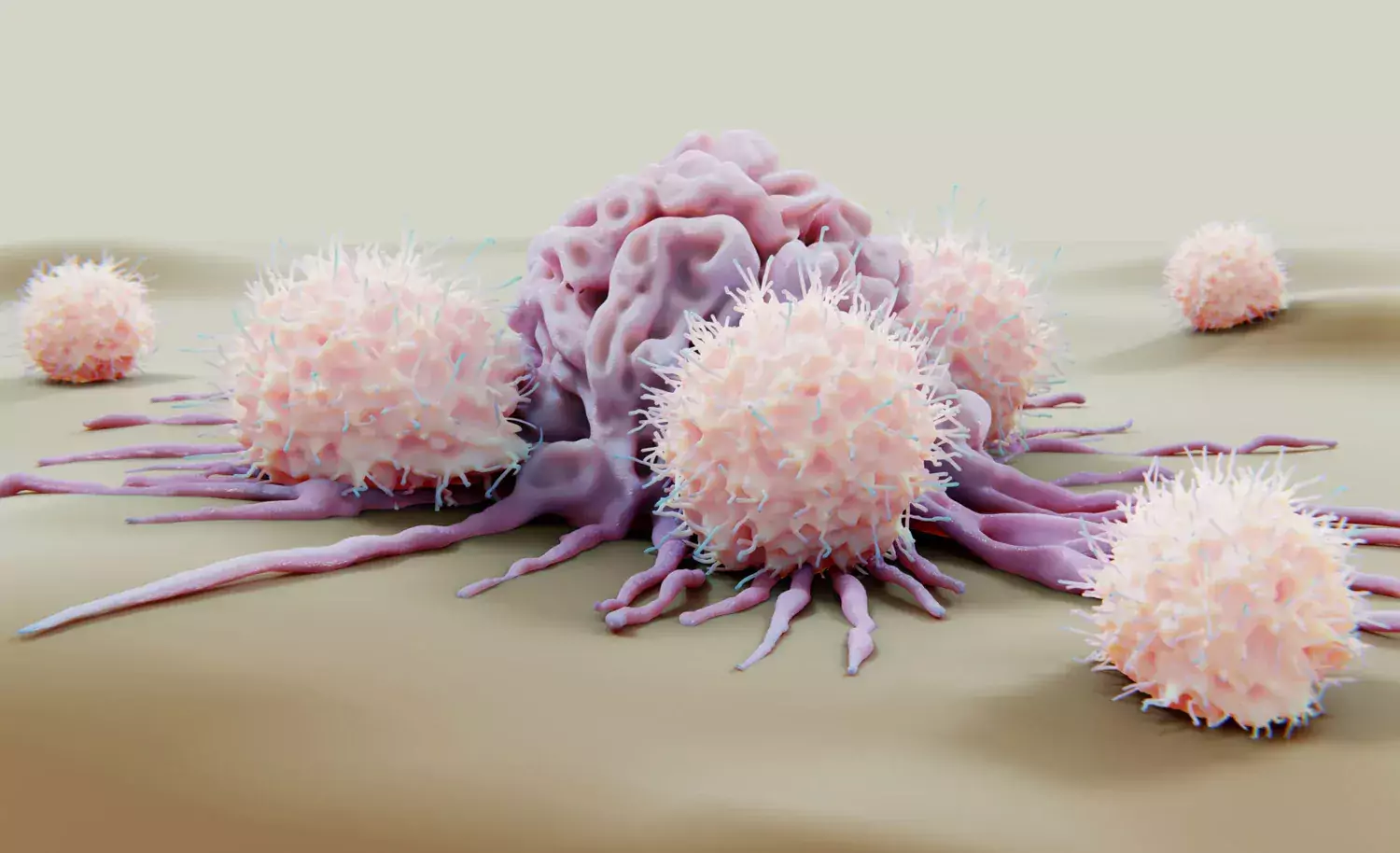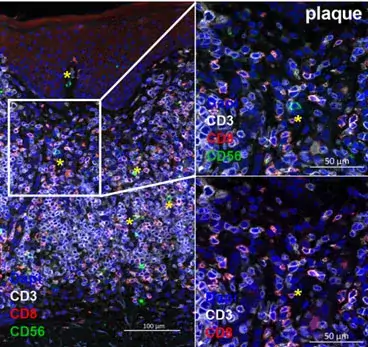Impaired natural killer cells in cutaneous lymphoma – possible new targets for future therapies

Researchers from Karolinska Institutet found a high number of the so called natural killer cell, an important anti-lymphoma cell, in samples from patients with cutaneous lymphoma. However, the cells were immature and less active. A future therapy could be to restore their function locally. The study was published in Frontiers in Immunology.

Cutaneous lymphoma is a serious, but less well studied type of skin cancer. Early stages of the disease have good prognosis, but in advanced stages the prognosis is poor. The treatment is seldom curative, and there is an urgent need for new treatment options.
So called natural killer (NK) cells are important anti-lymphoma cells. In the study the researchers found high numbers of NK cells in skin samples from cutaneous lymphoma patients. However, these cells were immature and activity-impaired. Furthermore, they found that close cellular interactions with lymphoma cells induced the impaired NK cell functional phenotype.
“These results are interesting, and suggest that enhancing the activity of skin NK cells in cutaneous lymphoma could be a potential immunotherapeutic approach”, says principal investigator Hanna Brauner, associate professor at the department of Medicine, Solna and specialist in dermatology, Karolinska University hospital.

In a next step the authors aim to delineate factors needed for a successful rejection of lymphoma or local cure. Therefore, a detailed investigation of skin from cutaneous lymphoma patients will be performed before and during treatment, including lymphoma cells, anti-lymphoma immune cells and other cells in the tissue microenvironment.
The new knowledge gained can hopefully also be applied for increasing the understanding of the pathophysiological mechanisms of other less accessible lymphoma subtypes.
The study was performed in close collaboration with the Karolinska University Hospital, the department of Dermatology, and was supported by grants from the Swedish Society for Medical Research, the Swedish Cancer Foundation, the Swedish Medical Association, Region Stockholm (clinical research appointment and ALF medicine), Hudfonden and Clas Groschinsky, Åke Wiberg, Magnus Bergvall, Radiumhemmet and Karolinska Institutet foundations (including a Karolinska Institutet PhD student grant, KID) and the KI-China Scholarship Council (CSC) programme.
Publication

Authors
Andrea Scheffschick1, Julia Nenonen1, Mengmeng Xiang1, Anna H. Winther1,2 , Marcus Ehrström3, Marie Wahren-Herlenius1,4, Liv Eidsmo1,5, Hanna Brauner1,2*
1Division of Rheumatology, Department of Medicine, Solna and Center for Molecular Medicine, Karolinska Institutet, Stockholm, Sweden
2Department of Dermatology, Karolinska University Hospital, Stockholm, Sweden
3Department of Reconstructive Plastic Surgery, Karolinska University Hospital, Stockholm, Sweden
4The Broegelmann Research Laboratory, Department of Clinical Science, University of Bergen, Bergen, Norway
5LEO Foundation Skin Immunology Research Center, Department of Immunology and Microbiology, University of Copenhagen, Copenhagen, Denmark
